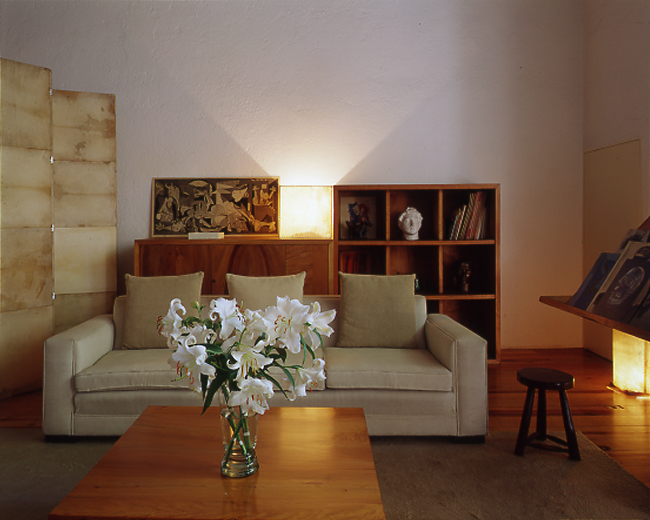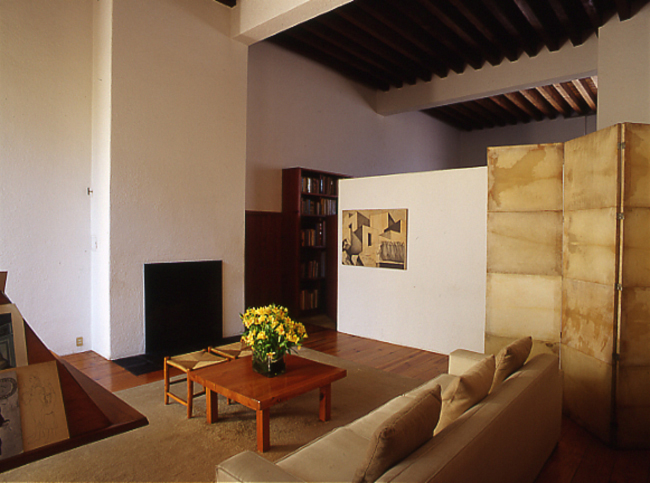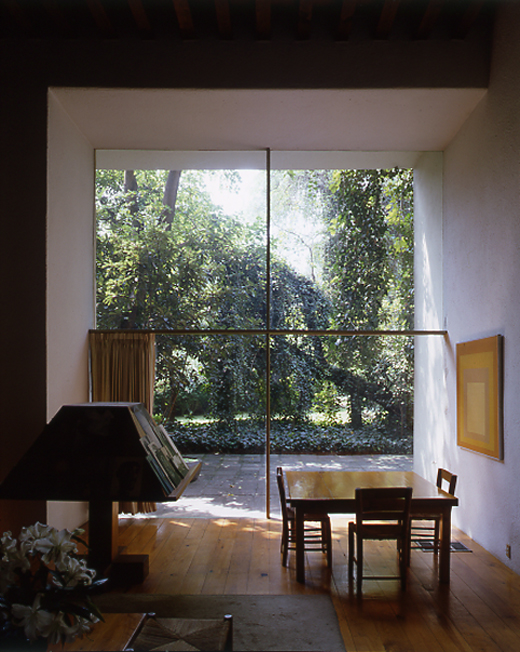GROUND FLOOR / Living room
The passage towards the living room-library is articulated with the resources that remain constant in other passageways. An accent of scale, similar to a contraction with its corresponding shadow, never frontal or direct, but propelled by the discontinuous flow of motion stops in the room with a new burst of space, air and light.
Within a few steps, the figure of a wood carved Madonna, a luminous cylinder-shaped floor lamp, and the first of the great reflecting spheres (a new spatial contraction captured in silver) appear, carefully placed so that they might be discovered.
Past a leather screen, the eyes fix on the surprising garden staging. To call this event a window would be a reductionism because the frame built for that encounter with the garden is itself another space, a proscenium, which goes beyond the minimum depth that a sheet of glass and its iron frame can possess.
The western façade of the house distinguishes from the practically impenetrable boundary of the street’s façade not only by the proportion of its openings, but also in its conception as a dialogue mechanism between the house and its garden.
This is the case of the living room’s great window. It is through this façade that nature accompanies and incites the living experience that occurs inside. This façade is more than a boundary; it is the plane that comes before that other spatiality, the vegetation that causes it to acquire a metaphysical rather than a utilitarian value.
The living room faces and accompanies the garden. It is furnished with chairs, solid wood tables, an armchair, and a monk’s lectern. Once again, the daily objects were not designed with industrial materials, just solid wood, leather, vegetable and wool fibers.
With Clara Porset as consultant, many pieces of furniture are recreations or a subtle reordering of traditional and anonymous designs. It should be noted that the ability of the place to harmoniously hold these simple, handcrafted objects is foreign to any idea of mass production.
Moreover, far from provoking a stylistic or semantic contradiction, the antique pieces of Western sacred art or the ceremonial tribal objects fit quite naturally into the timeless context of the house.




